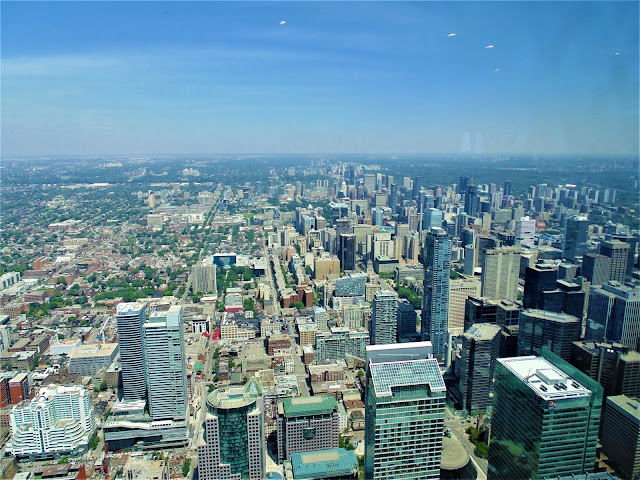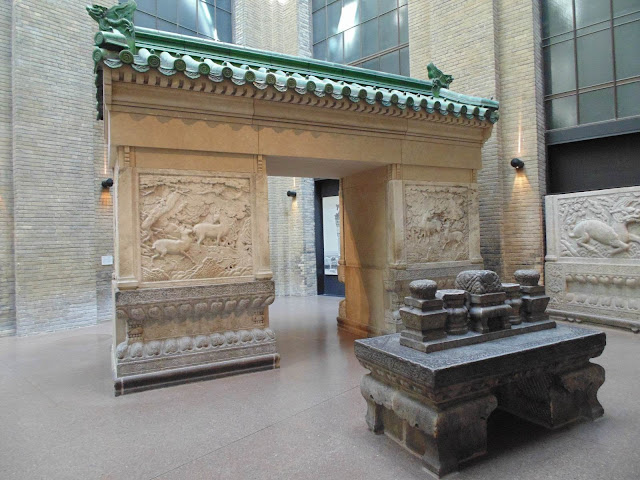At more than 1,100 feet, CN Tower's main pod offers spectacular panoramic views of the city. Identifying various buildings and the areas of the city is a fun exercise. Here is my take on it.
On the western side, one can see up to Humer Bay and High Park. The Railway corridor on the right and Gardiner Expressway on the left are snaking through the city.
East and West Islands in the southwest. Cinesphere movie theater and Budweiser concert hall are prominent on the islands.
A cruiser yacht on Lake Ontario.
Billy Bishop Toronto City Airport and its closeup on the Center Island.
HTO Park East and Toronto Fire & Marine Station 334. The Quay Apartment complex is on the right.
Police Basin and Toronto Police Marine are on the top left. Harborfront is on the right, adjacent to HTO Park. 249 Queens Quay West apartment buildings and Radisson Admiral Hotel with its pool are on the bottom and center-left.
The Rivera Condos at 230 Queens Quay West.
Roundhouse Park and Railway Museum are on the south side of the tower.
CN Tower base and top of the Ripley's Aquarium of Canada, as seen from the glass floor.
Spadina Avenue bridge over rail corridor on the western side.
Part of the Roger Center skydome is visible at the bottom left. Canadian Broadcasting Centre is on the bottom right. Others include a number of residential and commercial towers.
The northern side of the city as seen from the tower.
Metro Hall, Canadian Broadcasting Centre (building with red and black cubes), The Ritz-Carlton hotel (just behind the small park at the bottom) and Simcoe place business center (bottom right).
Simcoe Park is just north of the tower. The "mountain", an aluminum sculpture by British artist Anish Kapoor is also visible in the center.
Hyatt Regency and InterContinental Hotels are Just north and northeast of the tower respectively.
Art Gallery of Ontario and OCAD (Ontario College of Art and Design University) are a little bit further north of the tower. OCAD can be identified by its legs like structure on the right. Grange Park is in the middle. The tall building on the left is Gallery Towers apartment building, I think.
Empire Plaza and One University Apartments on the east side of the tower.
Eastside of the city. Union Station is on the bottom right with Hotel Fairmont Royal York in its front. The skyscrapers behind those form the core of the financial district. These include Royal Bank Plaza (shiny golden building on the right), TD Canada Trust Tower, Bay Wellington Tower, Bank of Montreal building (tall white building in the center), and Toronto Dominion Center among others.




















































